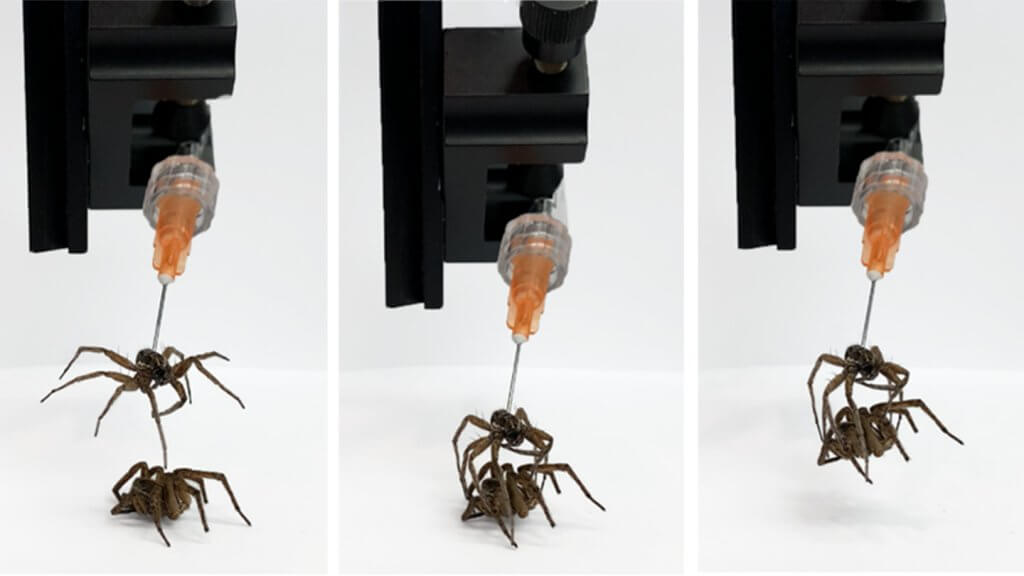Let me start by explaining the word Necrobotic Technology. Necrobotics combines "necromancy" (talking to the dead) and "robotics" (robots) into one concept. Therefore, this particular technology is the new technology that uses dead animals. Well, this is kinda like the technology we have read in fictional stories like Frankenstein. Keep reading for more interesting facts about this amazing technology.

Necrobotics is a new discipline of robotics with the potential to transform how we interact with our surroundings. By utilizing the natural shape and behavior of animals, Necrobotics can construct robots that are more versatile, resilient, and sustainable than ever before.
Teaching and Learning through Necrobotic Technology
Necrobotics is a new field that shows significant potential for the future of academics. Necrobotics, which combines neurology, robotics, and AI, has the potential to transform the way we educate, learn, and do research.

Necrobotic Technology provides interesting opportunities to improve learning experiences in academia. We can make smart robotic equipment that adjusts to each student's needs for better learning. These robots can evaluate pupils' strengths, limitations, and learning techniques, and then alter their teaching methods dynamically. Necrobotics uses AI and machine learning approaches to create interactive and engaging learning environments that improve information retention and student engagement.
Scientific experiment through Necrobotic Technology
The incorporation of Necrobotics into academia can also encourage interdisciplinary research and innovation. Researchers can use robotic systems to replicate and model complicated scientific events, speeding up the discovery process. Robots can help human researchers generate hypotheses, analyze data, and experiment by emulating human cognitive processes.
Dead spiders as robot grippers
US researchers have recently developed a more "direct" approach in creating robotic grippers, inspired by diverse animals' grippers. They devised a method for delicately grasping small objects by utilizing actual dead spiders.

Reason for using spiders
- Spiders use hydraulic pressure to move their legs, as opposed to mammals, which use opposing muscles to extend and contract. Equipped with a prosoma chamber near their head, they deliver blood to their legs as they contract, causing the legs to stretch. When the pressure goes away, the legs close again.
- It is relatively simple to activate each of the eight legs of a spider that joined the choir invisibly.
- Very mobile, incredibly efficient, extremely durable, and, in certain situations, they are dirt cheap.
How it is made?
First, the spider is euthanized by inserting a needle into its prosoma chamber. A drop of adhesive secures the needle in place. Then, we use the instrument attached to the needle to inject a small amount of air into the chamber, forcing the legs to open. When air is taken and released from the chamber, the limbs retract.
In previous testing, the spider-based necrobotic grippers were capable of lifting more than 130% of the spider's body weight. One spider carcass may withstand around 1,000 open/close repetitions until its tissues collapse. It is thought that applying a coating made of polymers will improve longevity.
Advantages of Necrobotic Technology

- It can take advantage of the natural form and functionality of biological materials without needing to recreate them artificially.
- Biotic materials are specialized in functions including movement, sensing, and manipulation. By reusing them , necrobotics can skip the complicated and expensive fabrication stages required for traditional robotics.
- Biotic materials are frequently soft, compliant, and adaptable, allowing for more flexible and powerful interactions with the outside world.
- Necrobotics could be a more environmentally friendly technique to create robots. Biotic substances are biodegradable, which means they may be disposed of without affecting the environment.
Ethical aspect of Necrobotic Technology
As with any growing technology, addressing ethical issues in Necrobotics is crucial. We must ensure the appropriate creation and operation of intelligent robots. In my opinion, we need to establish safeguards to preserve privacy, prevent data misuse, and maintain a human-centered focus in academia. Additionally, we must develop ethical criteria for using Necrobotics in human subjects research to ensure the safety and well-being of participants.
This new technology gives a bit of a thrill as it looks like the scientists are creating zombies out of dead bodies. Several businesses are actively pushing the boundaries of brain-computer technology. Neuralink, for instance, has secured FDA approval for their technology and is already implanting it in humans. Similarly, Synchron has achieved a successful first implant of their device in a human patient's brain. Cochlear implants have helped numerous people with profound hearing loss by bypassing damaged parts of the ear and delivering signals to the auditory nerve.
Where do you think Necrobotic Technology will lead the way with the help of the above companies?
Visit the previous article about Digital Twin.
Author of Get Basic Idea – The Knowledge Base / Bachelor of Technology – BTech, Mechatronics, Robotics, and Automation Engineering.
